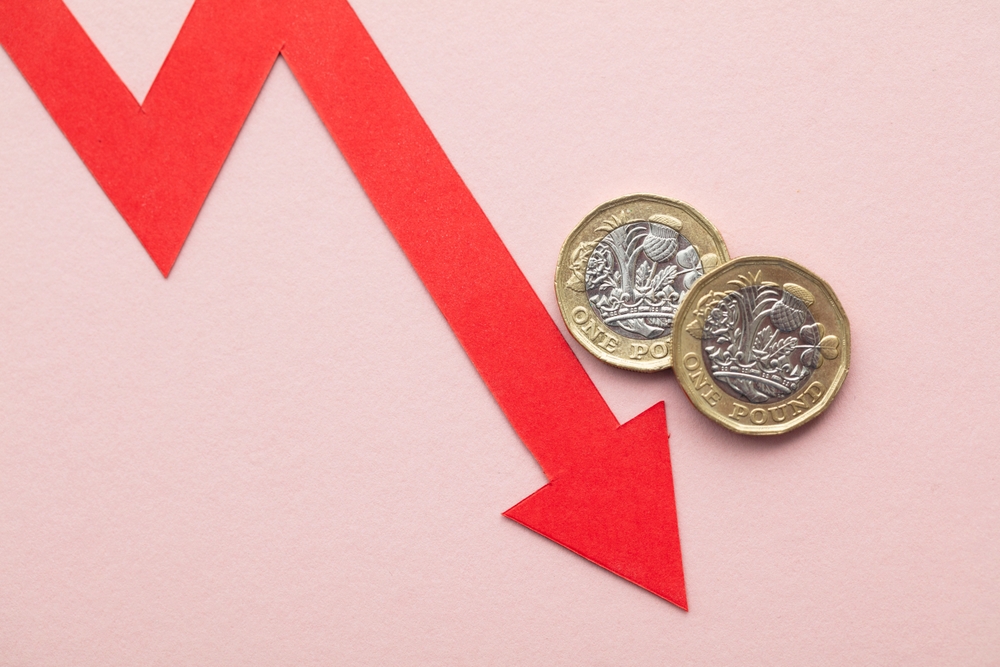Household Bills
Inflation falls to single digits, but interest rates could still rise to 5.5%

Inflation has fallen sharply to 8.7% in the year to April 2023, and while households may breathe a sigh of relief, analysts now predict the base rate to peak at 5.5%.
The Consumer Prices Index (CPI) measure of inflation has fallen back from 10.1% in the 12 months to March, to 8.7% in April – the first time in eight months it has recorded single digits.
It is also considerably down from the peak 11.1% recorded in October 2022.
This latest 1.4 percentage point fall in year-on-year inflation compared to March will be welcome, as the shock energy price cap increase in April last year has fallen out of the reading.
However, the fall was partially offset by upward effects from recreation and culture, alcoholic beverages and tobacco, communication and transport. Council tax increases were also noted.
Overall, the latest headline figure is higher than market forecasts of between 8- and 8.5%.
Further, on a monthly basis, CPI has actually risen by 1.2%, while core inflation which excludes energy, food, alcohol and tobacco, rose by 6.8% in the 12 months to April, up from 6.2% in March, taking it to a 31-year high (March 1992).
According to the figures from the Office for National Statistics (ONS), the inflation rate of food and non-alcoholic drinks eased from 19.2% in the year to March 2023 to 19.1% in the year to April.
It noted that the decrease in the annual rate was driven by downward price movements from bread, cereals, fish, milk, cheese, eggs, sugar, jam and honey. Meanwhile, potatoes provided the largest upward contribution to this category.
Sticky inflationary pressures keep momentum up on base rate rises
Danni Hewson, head of financial analysis at AJ Bell, said inflation might finally have dipped below double digits, but food inflation is still “ridiculously high” and looking at core numbers “there are real concerns about how sticky inflation is likely to prove in the long run”.
Hewson added: “The price of some staples has fallen with things like cereal, bread and milk down, but the cost of some vegetables including potatoes was up and the time lag between wholesale costs falling and that filtering through to supermarket shelves means shoppers are unlikely to be dancing down the aisles.
“In April last year, households were dealing with the shock increase in energy prices as that price cap shot up. That increase has now dropped out of comparisons, but that doesn’t mean we are paying less for our energy.
“For that we will have to wait until July and even then, if the cap does fall to around £2,000 for an average household, the end of that lovely £400 rebate scheme means most people will find they are paying pretty much what they were back in October.”
She said with core inflation “heading the wrong way” it sets the scene for at least one more interest rate hike.
“Looking at market expectation this morning it seems there’s speculation the Bank of England might go as high as a 5.5% base rate in order to complete its task.
“Wages have risen, even if most people haven’t felt the benefit because of those price hikes, and businesses will have to find a way to recoup those increases if they haven’t already passed the costs onto their customers,” she said.
Rob Morgan, chief investment analyst at Charles Stanley, said: “With groceries in particular showing little response to the Bank of England’s twelve successive interest rate rises, today’s figures could well seal a further increase in interest rates at the monetary policy committee’s next meeting on 22 June from the current level of 4.5%.
“Like other major central banks, the Bank of England is near the end of its interest rate hiking cycle but will likely maintain tight policy for the remainder of the year, meaning no significant rate cuts until 2024. While the battle with inflation will be won, it will likely be a long and arduous one with central bankers’ credibility at stake.”
The market reaction to inflation figure
William Marsters, senior sales trader at investment platform Saxo, noted a small rally in the pound sterling up to 1.247 vs the US Dollar, with these gains quickly unwound to GBPUSD trading last near 1.244.
Russ Mould, investment director at AJ Bell revealed the UK 10-year Gilt rate jumped to 4.3% on the news, the highest level since last October and significantly ahead of the 3% level seen only three months ago.
He added that the stock market didn’t like the news, with the FTSE 100 falling 1.5% to 7,643. There were only two stocks rising in the index – testing group Intertek and renewable energy expert SSE. The biggest fallers were housebuilders and property companies, “understandable given their sensitivity to interest rate moves”.